Posted on September 13th, 2010 by Jaimie Schock
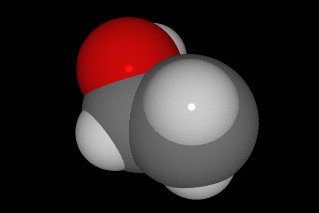 What kinds of foods are easiest to ferment for fuel? Ethanol is made from a variety of plant substances – corn, sugar cane, even some kinds of wood. In this activity, students test different substances to see what they can learn about fermentation.
What kinds of foods are easiest to ferment for fuel? Ethanol is made from a variety of plant substances – corn, sugar cane, even some kinds of wood. In this activity, students test different substances to see what they can learn about fermentation.
Read More
Filed under: Class Activities, Grades 9-12 | Comments Off on Activity: Ethanol Fermentation
Tags: Agricultural, Alternative Energy, Alternative Fuels, Class Activities, Environmental Engineering, Grades 9-12, Green Technology
Posted on September 6th, 2010 by Jaimie Schock
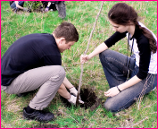 60 freshman at Maryland’s North Harford High School will be the first to join a new Natural Resources and Agricultural Sciences program, spending time outside the classroom in barns, pastures, and fields to learn about farming and the environment.
60 freshman at Maryland’s North Harford High School will be the first to join a new Natural Resources and Agricultural Sciences program, spending time outside the classroom in barns, pastures, and fields to learn about farming and the environment.
Read More
Filed under: K-12 Education News | Comments Off on Science Class in Fields and Forests
Tags: Agricultural, Environmental Engineering, Environmental science, Programs for Students
Posted on July 6th, 2010 by ASEE
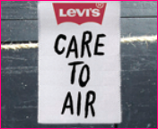 In partnership with the Myoo Create community, Levi Strauss & Co. is running a competition for designers everywhere to respond to the challenge of how to design the world’s most innovative, covetable, and sustainable air-drying solution for clothing. They’re offering $10,000 prize money to be distributed among the finalists for the most effective solutions, as well as an audience with experienced designers and eco-innovators.
In partnership with the Myoo Create community, Levi Strauss & Co. is running a competition for designers everywhere to respond to the challenge of how to design the world’s most innovative, covetable, and sustainable air-drying solution for clothing. They’re offering $10,000 prize money to be distributed among the finalists for the most effective solutions, as well as an audience with experienced designers and eco-innovators.
Read More
Filed under: For Teachers, Grades 6-8, Grades 9-12, Grades K-5, K-12 Outreach Programs | Comments Off on Competition: Solution to Air-Dry Clothes. July 31, 2010
Tags: Competition, Competitions for Students, Competitions for Teachers, Environmental Engineering
Posted on July 5th, 2010 by Jaimie Schock
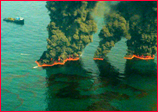 The latest X-Prize Foundation multimillion-dollar engineering and invention contest will tackle the Gulf of Mexico oil spill, with entrants proposing solutions to shorelines and open water sullied by oil from the Deepwater Horizon oil spill, which has been gushing since April 20, 2010.
The latest X-Prize Foundation multimillion-dollar engineering and invention contest will tackle the Gulf of Mexico oil spill, with entrants proposing solutions to shorelines and open water sullied by oil from the Deepwater Horizon oil spill, which has been gushing since April 20, 2010.
Read More
Filed under: K-12 Education News | 1 Comment »
Tags: Competition, Competitions for Students, Competitions for Teachers, Energy and Environmental Technology, Environmental Engineering, Organizations, Science Contest
Posted on May 24th, 2010 by ASEE
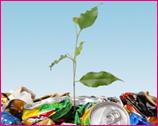 Student teams use the engineering design process to create a useful product of their choice out of recyclable items and “trash.” The class is given a “landfill” of reusable items and allowed a limited amount of bonding materials. The activity addresses the importance of reuse and encourages students to look at ways they can reuse items they would normally throw away. Students are further prompted to consider the problems with growing landfills, and efforts by engineers and others to reduce pollution, emissions, and trash production.
Student teams use the engineering design process to create a useful product of their choice out of recyclable items and “trash.” The class is given a “landfill” of reusable items and allowed a limited amount of bonding materials. The activity addresses the importance of reuse and encourages students to look at ways they can reuse items they would normally throw away. Students are further prompted to consider the problems with growing landfills, and efforts by engineers and others to reduce pollution, emissions, and trash production.
Read More
Filed under: Grades 6-8, Lesson Plans | 1 Comment »
Tags: Engineering Design Process, Environmental Engineering, Environmental science, Grades 6-8, Recycling, Trash
Posted on May 10th, 2010 by ASEE
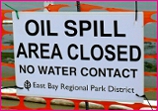 In this lesson, students in grades 3-12 work in teams to analyze an “oil spill” in the classroom, then design, build, and test a system to first contain, and then remove the oil from the water. Students select from everyday items to build their oil containment and clean-up systems, evaluate the effectiveness of their solution and those of other teams, and present their findings to the class.
In this lesson, students in grades 3-12 work in teams to analyze an “oil spill” in the classroom, then design, build, and test a system to first contain, and then remove the oil from the water. Students select from everyday items to build their oil containment and clean-up systems, evaluate the effectiveness of their solution and those of other teams, and present their findings to the class.
Read More
Filed under: Grades 6-8, Grades 9-12, Grades K-5, Lesson Plans | 3 Comments »
Tags: Energy and Environmental Technology, Environmental Engineering, Environmental science, Grades 3-12, Ocean
Posted on April 19th, 2010 by ASEE
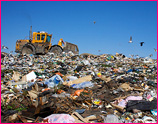 What happens to garbage? In this lesson, students grades 9-12 derive the answer by building their own landfill. While observing how household waste can leach into soil and groundwater, they also learn the importance of well supervised, sanitary disposal sites.
What happens to garbage? In this lesson, students grades 9-12 derive the answer by building their own landfill. While observing how household waste can leach into soil and groundwater, they also learn the importance of well supervised, sanitary disposal sites.
Read More
Filed under: Grades 9-12, Lesson Plans | 2 Comments »
Tags: Clean Water, Environmental Engineering, Environmental Protection Agency, Environmental science, Grades 9-12, Lesson Plan, Waste management
Posted on April 19th, 2010 by Jaimie Schock
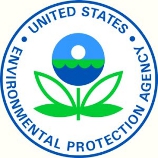 This comprehensive website, run by the Environmental Protection Agency, provides lists of Superfund sites organized by state. A Superfund site is an uncontrolled or abandoned place where hazardous waste is located, possibly affecting local ecosystems or people. Important documents, contacts, timelines, and historical information are available for each location.
This comprehensive website, run by the Environmental Protection Agency, provides lists of Superfund sites organized by state. A Superfund site is an uncontrolled or abandoned place where hazardous waste is located, possibly affecting local ecosystems or people. Important documents, contacts, timelines, and historical information are available for each location.
Read More
Filed under: Web Resources | 1 Comment »
Tags: Environmental Engineering, Environmental Protection Agency, Green, Internet Resources, Superfund, Waste management, Web Resources
Posted on April 19th, 2010 by Jaimie Schock
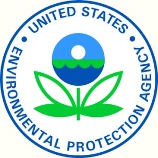 HAZ-ED is a collection of class materials for grades 7-12 focusing on hazardous waste, dump sites, and efforts of remediation The materials — which include basic information, warm-up and full class activities, fact sheets, a glossary, suggested readings, a brochure about the Superfund program, and a bibliography — can be used as part of a larger curriculum or stand-alone.
HAZ-ED is a collection of class materials for grades 7-12 focusing on hazardous waste, dump sites, and efforts of remediation The materials — which include basic information, warm-up and full class activities, fact sheets, a glossary, suggested readings, a brochure about the Superfund program, and a bibliography — can be used as part of a larger curriculum or stand-alone.
Read More
Filed under: Web Resources | Comments Off on Resource: Hazardous Waste Class Activities
Tags: Curriculum, Environmental Engineering, Environmental Protection Agency, Grades 7-12, Internet Resources, Superfund, Waste management, Web Resources
 What kinds of foods are easiest to ferment for fuel? Ethanol is made from a variety of plant substances – corn, sugar cane, even some kinds of wood. In this activity, students test different substances to see what they can learn about fermentation.
What kinds of foods are easiest to ferment for fuel? Ethanol is made from a variety of plant substances – corn, sugar cane, even some kinds of wood. In this activity, students test different substances to see what they can learn about fermentation.








 60 freshman at Maryland’s North Harford High School will be the first to join a new Natural Resources and Agricultural Sciences program, spending time outside the classroom in barns, pastures, and fields to learn about farming and the environment.
60 freshman at Maryland’s North Harford High School will be the first to join a new Natural Resources and Agricultural Sciences program, spending time outside the classroom in barns, pastures, and fields to learn about farming and the environment. In partnership with the Myoo Create community, Levi Strauss & Co. is running a competition for designers everywhere to respond to the challenge of how to design the world’s most innovative, covetable, and sustainable air-drying solution for clothing. They’re offering $10,000 prize money to be distributed among the finalists for the most effective solutions, as well as an audience with experienced designers and eco-innovators.
In partnership with the Myoo Create community, Levi Strauss & Co. is running a competition for designers everywhere to respond to the challenge of how to design the world’s most innovative, covetable, and sustainable air-drying solution for clothing. They’re offering $10,000 prize money to be distributed among the finalists for the most effective solutions, as well as an audience with experienced designers and eco-innovators. The latest X-Prize Foundation multimillion-dollar engineering and invention contest will tackle the Gulf of Mexico oil spill, with entrants proposing solutions to shorelines and open water sullied by oil from the Deepwater Horizon oil spill, which has been gushing since April 20, 2010.
The latest X-Prize Foundation multimillion-dollar engineering and invention contest will tackle the Gulf of Mexico oil spill, with entrants proposing solutions to shorelines and open water sullied by oil from the Deepwater Horizon oil spill, which has been gushing since April 20, 2010. Student teams use the engineering design process to create a useful product of their choice out of recyclable items and “trash.” The class is given a “landfill” of reusable items and allowed a limited amount of bonding materials. The activity addresses the importance of reuse and encourages students to look at ways they can reuse items they would normally throw away. Students are further prompted to consider the problems with growing landfills, and efforts by engineers and others to reduce pollution, emissions, and trash production.
Student teams use the engineering design process to create a useful product of their choice out of recyclable items and “trash.” The class is given a “landfill” of reusable items and allowed a limited amount of bonding materials. The activity addresses the importance of reuse and encourages students to look at ways they can reuse items they would normally throw away. Students are further prompted to consider the problems with growing landfills, and efforts by engineers and others to reduce pollution, emissions, and trash production. In this lesson, students in grades 3-12 work in teams to analyze an “oil spill” in the classroom, then design, build, and test a system to first contain, and then remove the oil from the water. Students select from everyday items to build their oil containment and clean-up systems, evaluate the effectiveness of their solution and those of other teams, and present their findings to the class.
In this lesson, students in grades 3-12 work in teams to analyze an “oil spill” in the classroom, then design, build, and test a system to first contain, and then remove the oil from the water. Students select from everyday items to build their oil containment and clean-up systems, evaluate the effectiveness of their solution and those of other teams, and present their findings to the class. What happens to garbage? In this lesson, students grades 9-12 derive the answer by building their own landfill. While observing how household waste can leach into soil and groundwater, they also learn the importance of well supervised, sanitary disposal sites.
What happens to garbage? In this lesson, students grades 9-12 derive the answer by building their own landfill. While observing how household waste can leach into soil and groundwater, they also learn the importance of well supervised, sanitary disposal sites. This
This 